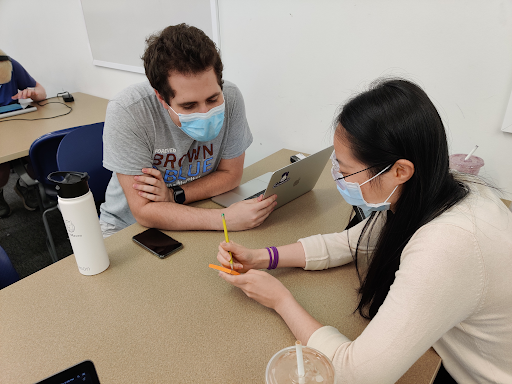Ideate Solutions and Experience Prototypes
Assignment 4
Executive Overview
This week, we aimed to brainstorm solutions to some of our perceived problems. Specifically, we used our prior interviews to generate dozens of HMWs, or “how might we”s. From there, we narrowed the scope to pick our best three (below to the left), and generated dozens of solutions based on these hypotheticals. We then narrowed the focus once more until we reached our two best solutions (below to the right). We also identified the underlying assumptions that our solutions relied on, without which we would be out of luck. Based on each of these two assumptions, we designed an experiment to verify them, and tested our theories with two new subjects.
How might we…
… help musicians transcribe their ideas?
… help musicians and producers visualize the nuances of their work?
… assist musicians in finding and organizing new inspirations?
We could accomplish this with…
… a notes-like app that allows digitally handwriting music.
… a multimedia collection board for songwriting.


Verifying Assumptions
Assumption 1:
There is a gap between ideas and presentation of music.
During our first experience prototype, we met with Prototypee 1, a student with a passion for music composition and arrangement. We asked them to be “inspired” (i.e. we would give them a short melody if they didn’t have one in mind), and they had to use whatever was in the room (notably, there was no paper accessible) to transcribe this melody into something legible by a musically competent friend.
The first thing they did was play the melody on the piano to get it into their mind. They then started to brainstorm how they might convey this to their friend and settled on doing so by describing the key, starting pitch, remaining scale pitches, and the rhythm. However, they recognized that “It would be a strange way to communicate the notes, but it would work,” especially since 1. it works better for extremely short pieces, 2. it only really is effective if the notes of the piece fall squarely within the bounds of a scale, and 3. it goes against conventions to hand over sheet music. Given this convention, they then decided to use Sibelius, since there was no paper around. However, they were quickly weighed down by setting the time signature, which they usually wouldn’t settle on until later, as well as phrasing details that they were forced to add even though they weren’t ready.
Assumption 2:
Musicians require inspiration when creating music and document it for later.
During our second experience prototype, we met with Prototypee 2, a student who participated in a cappella and music arrangement. We tasked them with an assignment where they needed to write a song with a specific feeling in mind; however, since they have such a busy schedule, they have to start now, but they have class in 30 minutes.
They focused on the feeling of nostalgia, and naturally gravitated towards Cinema Paradiso and the To Kill a Mockingbird theme. They wanted to listen to these through so they didn’t just have to hear them in their head, since they tended to be inspired by listening to others. Since they needed to log some of their inspiration for later, they thought it made the most sense to record their own voice so they could listen back to it later, although if they had had a piano around, they might have recorded that as well/instead. They primarily used music to get inspired, with the occasional movie, although even then, they were primarily focused on the soundtrack.
